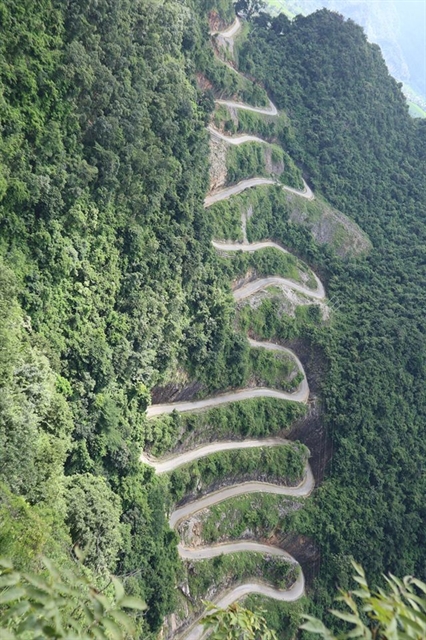
The 14-storey Mẻ Pia Pass in Cao Bằng is a challenge even for skilful drivers. — Photo viettravelo.com
By Lâm Giang
While Việt Nam’s four famous great peaks of the northwest -- Mã Pì Lèng, Khau Phạ, Pha Đin and Ô Quy Hồ -- have long been marked out by backpackers as indispensable places to visit, they pose a challenge for even the most skilful of drivers.
Though these passes are particularly scary, it is actually the 14-section Mẻ Pia Pass in Cao Bằng which has attracted the most attention. It is considered the most dangerous pass in the northeast, and is a surefire bet for adrenalin-junkies feeling adventurous.
The Mẻ Pia Pass is located on National Highway 4A, connecting the Xuân Trường Commune in the centre of the Bảo Lạc border district of Cao Bằng Province. With a length of up to 2.5km, the 14 sections of the pass form sharp, steep turns and descend rapidly with two high mountains on both sides.
Many people cannot remember the exact name of Mẻ Pia, so often they simply call it the 14-storey pass, as from the foot of the pass to the top they encounter 14 steep bends.
Fortunately, we had the opportunity to conquer this picturesque pass before the coronavirus pandemic had gripped the country. We took a coach from Yên Nghĩa terminal in Hà Đông District, 10km from central Hà Nội, to Cao Bằng. After arriving, we rented motorbikes to find our way to this majestic pass.
According to locals, the pass has been here since the French colonial period, though initially just as a rugged narrow road for horses. Then in 2011, it was replaced by an asphalt road about 5 metres wide.
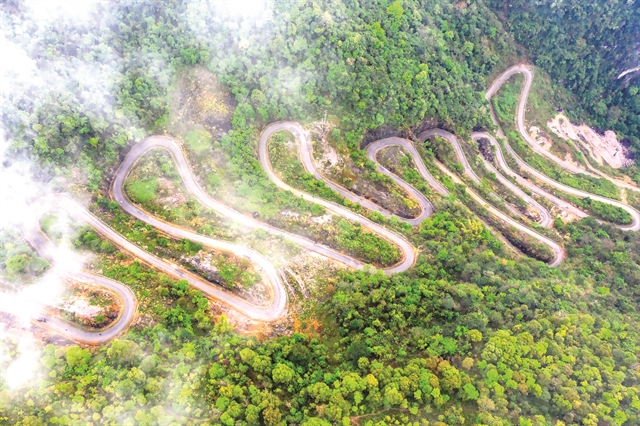
SNAKING THROUGH: The Mẻ Pia Pass is considered the most dangerous pass in the northeast. Photo top7vietnam.sgtiepthi.vn
The pass is exceptionally beautiful and has many bends as well as gorgeous wide views on the road. A trip through it is enough to make the soul soar.
We liked it so much that we kept going up and down to feel its winding and sharp turns, which are only a little less intimidating than the famed Tà Làng Pass in Hà Giang Province. The road surface was smooth, but we were still careful when cornering, our hearts occasionally in our mouths.
Unlike other passes in Việt Nam, you do not need to reach the top of the pass to be able to capture the panoramic views, but need to trek through the forest along its mountainsides to fully view the pass from another mountain.
At the top of the pass, there is a tea shop for visitors. The shop’s owner often enthusiastically leads guests along the trail to the top of the mountain. But now, because she is old she has made wooden signboards to show the way. She uses red paint to mark each rock so that tourists know when they are at a beautiful spot for photography.
As the time to climb to the best view point of the pass take about one hour, we prepared drinking water and snacks bought at the old lady's shop, as a thank you for her help.
The trail leading to the view point is not too difficult, but you can also hire a local guide to avoid getting lost.
After a period of walking, the Mẻ Pia Pass appears majestic with its 14 winding slopes elegantly coming into view – a worthy result for the effort spent during our trip.
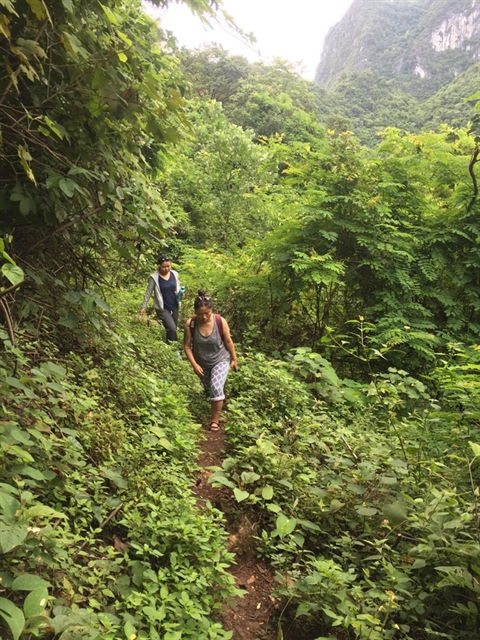
The trail to the panoramic view point of the Mẻ Pia Pass. — Photo dantri.com.vn
Within layers of white floating cloud, the pass slowly appears with beautiful winding bends, cascading like stairs to the top of the sky.
The grandeur of the landscape of the northeast mountainous region is overwhelming.
Standing at the highest point capturing the whole view of the pass, with layers of hills and vast green forests, we felt small in front of the majesty of the mountains and forests and were thankful for human efforts in exploring and creating this extremely dangerous yet imposing pass.
The Mẻ Pia Pass is one of the many amazing passes in the northern region. Although its difficulty to access made us wary, its mystery impelled us to try and conquer it and appreciate its sheer magnificence.
On our journey to the Mẻ Pia Pass, we had a chance to explore Bản Giốc Waterfalls and a series of other famous landscapes in Cao Bằng.
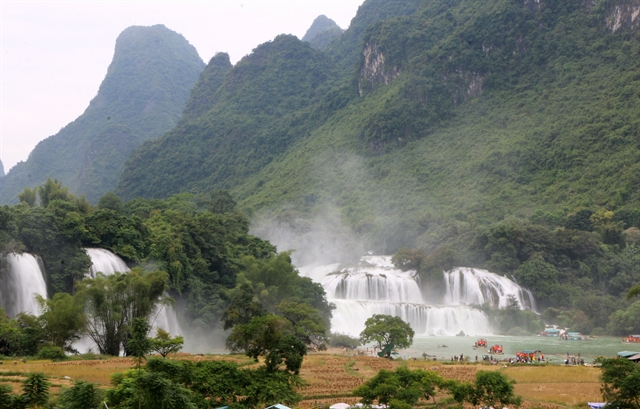
Bản Giốc Waterfalls – a destination not far from the Mẻ Pia Pass in Cao Bằng. — VNS Photo Đoàn Tùng
Going to Cao Bằng without visiting Bản Giốc Waterfalls is a huge mistake. The waterfalls are a symbol of the province, and all wonder that nature bestows.
The waterfall in Đàm Thủy Commune, Trùng Khánh District, is considered the most beautiful in Việt Nam. It is very wide and more than 10m high, and the water flows rapidly to form sensational white foam below.
Nearby, Ngườm Ngao Cave is also a place that must be viewed at least once in a lifetime. Favoured by nature, the cave in Gun Village, also in Trùng Khánh, has a unique beauty, hard to explain in words.
Inside the cave, incredible stalactites attract the eyes of visitors. Under the light, the water surface and stalactites appear magical and mysterious, mystical even.
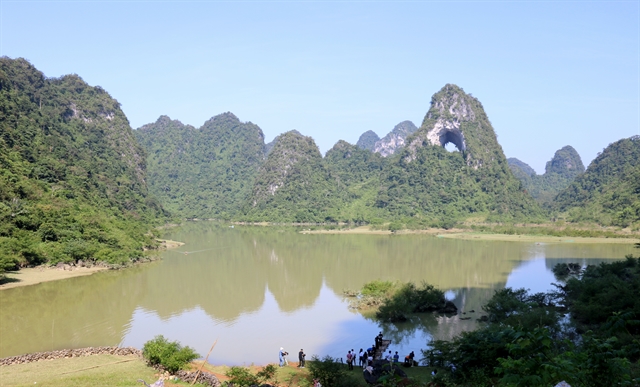
Thang Hen Lake is actually a complex of 36 large and small lakes. — VNS Photo Đoàn Tùng
Another place to visit with a poetic and lyrical beauty is Thang Hen Lake. It’s an eco-tourism area and the atmosphere is airy and fresh, suitable for those who desire tranquility and complete relaxation
Thang Hen Lake is located at the boundary of Ngũ Lão Commune, Hòa An District and Quốc Toản Commune, Trà Lĩnh District. It is a complex of 36 large and small natural lakes.
The trip to Cao Bằng made us totally satisfied. Hopefully, after the pandemic is over, you can pack your bags and head to the Mẻ Pia Pass too. There is no question that it will be an unforgettable memory. VNS
OVietnam